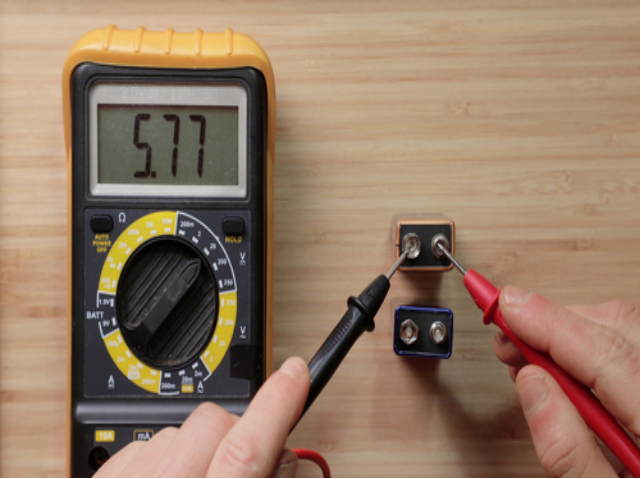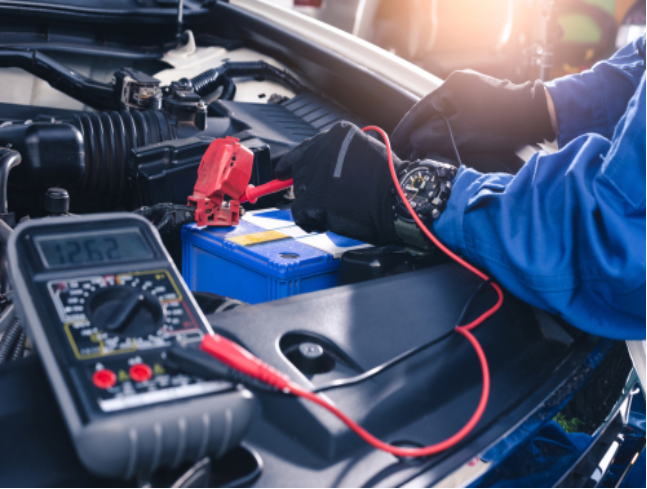How Do You Test If A Battery Is Good
Oct 17, 2022 Pageview:982
Introduction
Regular testing of your battery and electrical system is crucial; do not wait until they start to show signs of weakness If you proactively test it twice a year (or make sure your mechanic does), it will minimise your risks of failure.. Most shops provide a quick, free battery test that lasts for five minutes.
Test
You can test all of the different types of batteries to discover if they are charged or not. Drop an alkaline battery on a hard surface to observe if it bounces to determine whether the battery is failing. Get a precise charge reading by measuring the voltage with a multimeter, voltmeter, or battery tester. To test your automobile battery, you can also use a multimeter or voltmeter.
How Can A Battery Quality Be Tested?
Car batteries are among the most often examined batteries. A automobile battery can frequently degrade over time or fail suddenly, just like any other battery. It is always a good idea to check the car battery even when it is not bad weather, even if it is more likely to occur then. When completely charged, an automobile battery has a voltage of 12.6 V or higher, and it should be between 13.7 and 14.7 V when the engine is running.
How To Use A Multmeter TO Check The Voltage Of A Battery
Battery should be disconnected from the circuit.
Set the multimeter's knob to 15-20V DC voltage by turning it (a battery generates DC power). Always adjust the dial to a range higher than the battery's specified voltage. Selecting the 15-20V range on the multimeter's dial should work just fine for a 9V battery.
Connect the black probe to the COM port and the red probe's plug to the multimeter's VmA port.
The red probe should be connected to the positive terminal of the battery, and the black probe should be connected to the negative terminal.
Take the multimeter's reading. The battery is still safe to use if the reading for a 9V battery is greater than 7V.
For example, if the reading for a 9V battery is only 1V, the battery may be dead or defective and has to be replaced. If the multimeter registers less than half the voltage level listed on the battery, the battery is normally regarded as dead.

A Multimeter Should Be Used To Check The Car Battery's Voltage.
Switch off the vehicle's radio, lights, and other equipment as well as the ignition.
If your multimeter does not automatically range, set it to 20V DC.
The positive battery terminal, denoted by a red cover or a + symbol, should receive the red lead.
Black lead should connect with negative terminal .
Examine the measurement. You might need to charge your battery if the reading is less than 12.4 volt

How To Use A Voltmeter To Check Your Battery Voltage
Using a voltmeter, which measures the electrical potential difference between two points in an electric circuit (often known as voltage), is an easy way to verify the battery's voltage.use a digital voltmeter because it is simple to use.
To get the best accurate reading, carry out this test twelve hours after turning off your car. This will allow any surface charges to dissipate.
Ensure that your car's engine is off.
Remove the positive terminal cap from the battery .Find any corrosion on the terminal, then clean it off if necessary. ?join the positive lead of your voltmeter to the positive lead of the battery. Then, using the identical procedures as for the positive end, connect the negative voltmeter lead to the negative battery terminal At this stage, you can examine the voltmeter values.
Look over the reading. Normally, a completely charged battery will register between 12.6 and 12.8 volts on a voltmeterIf the voltage on your voltmeter is between 12.4 and 12.8 volts, your battery is in good state?
The voltage in your battery is likely too high if it is consistently higher than 12.9 volts. In that case, turn on the high beams to extinguish any additional voltage surface charge. (An excessive charge may also indicate that the overcharging of your battery is the result of your alternator.)
Charge your battery if the voltmeter reading is less than 12.4 volts. However, if your voltmeter reads anything less than 12.2 volts, you might consider "trickle charging" your battery. It might be a good idea to "trickle charge" your battery. In essence, this implies that you would be charging your battery considerably more slowly, allowing you to avoid the possibility of using an excessive amount of charge amperage, which can cause significant additional heat and off-gassing (and in extreme cases, explosions).
How Full Should Battery Cells Be With Water
sulfuric acid and distilled water make up the liquid "electrolyte" in conventional batteries. for proper operation, security, and long life, a lead battery's plates include an active substance that needs to be submerged in electrolytes constantly.
only when a battery has fully charged should it be watered. but before charging, you should always check the water level.
Just enough water should be present to cover any exposed plates before charging . once the cell has finished charging, add water until the level is 3/4 below the top of the cell and at the bottom of the vent.important information: do not ever add sulfuric acid to your battery . Batteries will only use water and not sulfuric acid when they are functioning normally. Filling your battery with water will maintain it healthy and safe to use when the electrolyte level is found to be low.
What Happens If You Overfill A Battery
The density of the electrolyte solution will rise when a battery charges. The electrolyte levels will rise if water is introduced before charging, which will cause the battery to overflow. These overflows will reduce the battery's capacity, carry a risk of harm, and typically necessitate pricey clean-up procedures. A lead acid battery's electrolyte will become diluted if it receives too much water, and each overflow will cause a 3-5% decline in the battery's capacity and performance. All of this can be avoided by using an electrolyte monitor, which will indicate when a battery requires water.other effects of overfill battery are
1. More spillover
2. More Boiling Occurrences
3. Less Powerful Batteries
4. Higher Rates of Corrosion
5. Increased Rates of Freezing
6.Higher Evaporation Rates
Leave Message
Hottest Categories
-
Hottest Industry News
-
Latest Industry News










